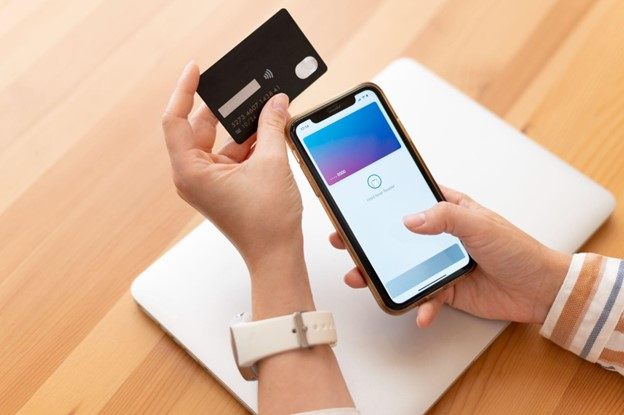For Indian businesses selling to international customers, offering a smooth payment experience is no longer optional. Whether you’re a growing D2C brand, an EdTech platform, or a SaaS company billing global users, your payment gateway can make or break customer trust.
Customers today expect to see prices in their own currency. They want to avoid confusing conversions or hidden fees. On the business side, teams want faster settlements, clear FX charges, and fewer compliance headaches.
This is where a strong multi-currency payment gateway like PayGlocal becomes critical. It simplifies international payments for both customers and businesses, without forcing either side to compromise.
The Need for Multi-Currency Payments in Indian Business
India’s digital economy is now global. More Indian companies are entering markets in the US, Europe, Southeast Asia, and the Middle East. Whether selling physical products or digital services, the challenge is the same—collecting payments in a way that feels local to the buyer and practical for the Indian seller.
Imagine this:
- You’re selling a product to a customer in Canada.
- The product price is shown in INR.
- The customer hesitates, unsure about how much it’ll cost in CAD.
- They abandon the cart and move to a competitor showing CAD pricing with no confusion.
That’s a lost sale—not because of the product, but because of the payment experience.
A multi-currency gateway helps avoid that scenario. It gives international customers the confidence to complete transactions, while businesses receive settlements in INR with clarity and speed.
Understanding What a Multi-Currency Gateway Does
A multi-currency payment gateway lets you accept payments in different currencies and automatically converts them into INR (or your preferred base currency).
This benefits both sides:
- Customers feel comfortable when they pay in their local currency.
- Businesses can manage operations in INR without worrying about exchange rates on each transaction.
But there’s more to it than just currency conversion.
An effective gateway also handles:
- Transparent FX pricing
- Fast settlements
- Regulatory compliance
- Real-time reconciliation
- Fraud detection
It becomes an enabler for cross-border growth, not just a tool for processing payments.
Where Traditional Payment Gateways Fall Short
Many existing solutions advertise multi-currency features but deliver poorly in practice. Indian businesses using them often face a range of issues that slow down growth and hurt customer experience.
1. Delayed Settlements
Legacy systems can take up to a week or more to settle international transactions. That delay puts pressure on cash flow and accounting, especially for smaller businesses that rely on faster cycles.
2. Poor Visibility into FX Charges
Some platforms apply conversion rates without showing the exact charges. Businesses lose visibility on how much money is lost in the process. Over time, this adds up and impacts margins.
3. Limited Currency Support
Gateways may support only a few currencies. For businesses targeting diverse regions—Europe, Middle East, Southeast Asia—that limitation can restrict expansion.
4. Checkout Abandonment Due to Lack of Localization
International customers expect to see familiar currency formats and localized checkout pages. Without this, trust is reduced and drop-offs increase. The result? Lower revenue despite good demand.
A Quick Example
Take a Mumbai-based SaaS company offering tools to freelancers globally. Without localized pricing, a user in Brazil saw INR pricing, got confused, and dropped out. Switching to a better multi-currency setup helped recover those leads and improve monthly conversions.
How PayGlocal Helps Solve These Problems
Indian businesses need a gateway that understands both Indian regulations and global expectations. PayGlocal is built for that.
1. Accept Payments in 100+ Currencies, Settle in INR
PayGlocal allows you to accept payments in your customer’s local currency and still receive INR in your account. This happens automatically, with no extra steps or confusion.
Whether your buyer is in Singapore, Germany, or Canada—they get a smooth experience. You, the merchant, continue your backend operations without needing any special processes.
2. Faster Settlements, No Guesswork in FX
Unlike traditional cross-border systems, PayGlocal ensures faster settlements. Businesses get timely access to their revenue, with clarity on how much they’re receiving and why.
The FX rate used is shared transparently. That helps you plan better, report accurately, and avoid last-minute surprises.
3. Simple Integrations, No Heavy Tech Lifting
PayGlocal integrates easily with Indian and global platforms. Whether you use Shopify, WooCommerce, or a custom ERP, the setup is quick. No need to maintain two separate systems—one for India and one for abroad.
It’s designed with local teams in mind. You don’t need global expertise to manage global payments anymore.
Business Outcomes That Make a Difference
The right multi-currency setup doesn’t just fix technical issues. It creates a better business outcome across functions—sales, finance, operations, and even support.
1. More Conversions From Global Customers
When your pricing feels native to your buyers, they convert more often. They’re less likely to bounce or hesitate.
This means:
- Lower cart abandonment
- Higher average order value
- Better brand trust
2. Improved Profit Margins with FX Control
Instead of absorbing unpredictable FX losses, PayGlocal lets you take control. Businesses can choose to lock rates, pass on FX charges to customers, or split it—based on what works best.
This flexibility protects your margins without adding effort.
3. Cleaner Reconciliation for Finance Teams
With real-time dashboards and clear transaction-level data, your finance team spends less time untangling settlement reports. This also improves your ability to forecast and manage working capital.
4. Built-in Fraud Checks and Local Support
International payments come with risks. Chargebacks and fraud can eat into revenue if not caught early.
PayGlocal includes fraud detection tools and offers local customer support. That means issues can be resolved faster, and your business stays protected.
Who Should Be Using PayGlocal Right Now
If you’re an Indian business with a global customer base—or planning to build one—PayGlocal can be useful across industries:
- SaaS platforms billing monthly users in USD, EUR, or SGD.
- D2C brands shipping to customers across North America or Europe.
- EdTech providers offering courses in the Middle East and Southeast Asia.
- Exporters working with retail or B2B clients abroad.
Even if your business is still small, having a reliable multi-currency gateway gives you the infrastructure to scale with confidence.
According to a recent report by PWC’s The Indian payments handbook 2024, cross-border transactions from Indian digital-first businesses grew by high percentage YoY, highlighting the urgent need for effective multi-currency solutions.
Final Thoughts: Global Growth Needs Local-Like Payments
Expanding globally is not just about reaching new markets. It’s about meeting local expectations while staying in control of your business.
A strong multi-currency gateway helps Indian businesses deliver a localized experience to global customers—without the operational chaos that often comes with cross-border payments.
PayGlocal offers a way to bridge that gap, combining convenience for customers with clarity for businesses. If you want to scale without borders, it’s time to fix the way you get paid.








